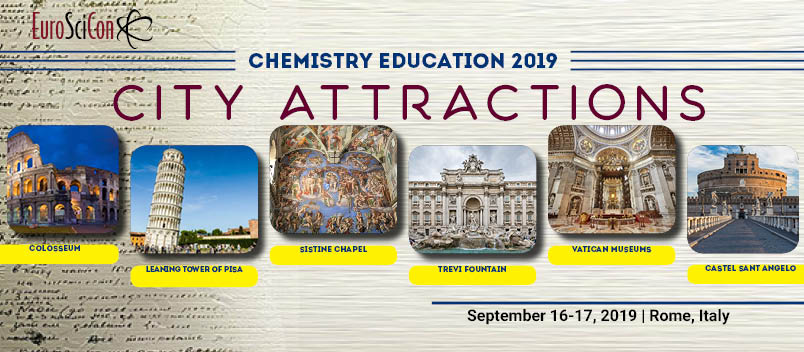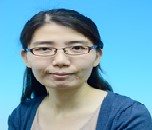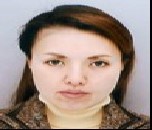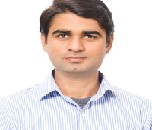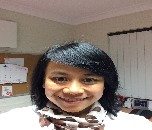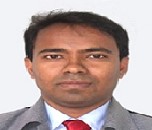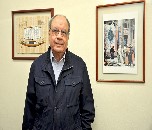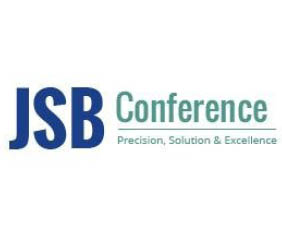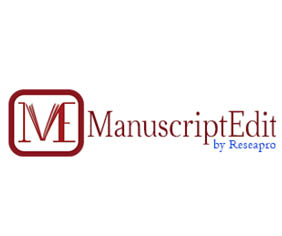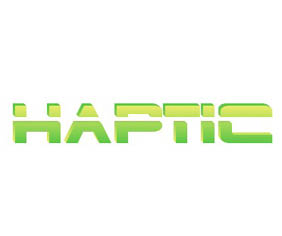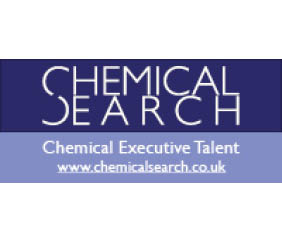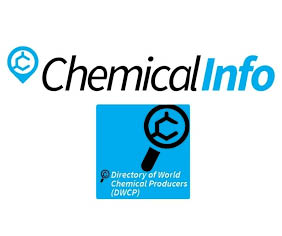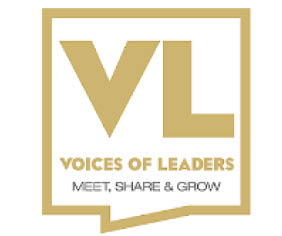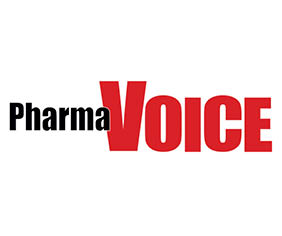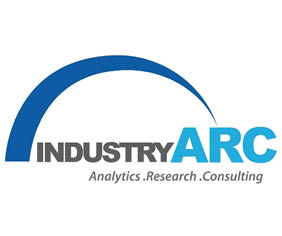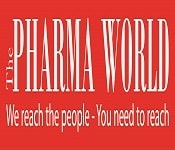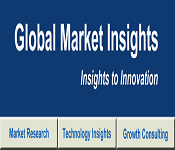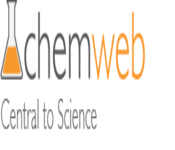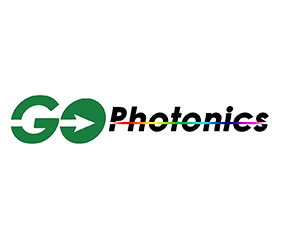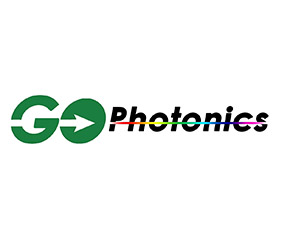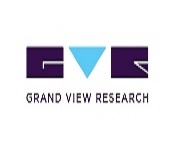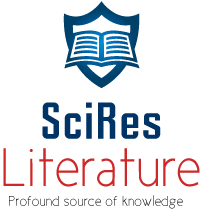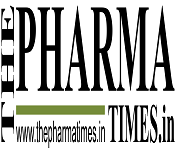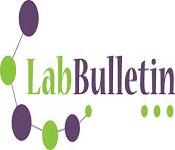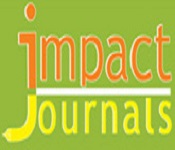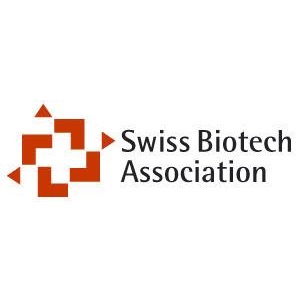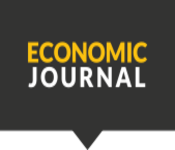Chemistry Education 2019
About Conference
EuroSciCon invites participants across the world to attend ''9th Edition of International Conference on Chemistry Education and Research” during September 16-17, 2019 at Brussels, Belgium which includes Keynote presentations, Oral talks (Speaker Forum and Young Research Forum), Poster presentations, Symposium, Workshops and Exhibitions.
Chemistry Education 2019 spreads an extensive range of critically important sessions from basic research to recent innovations. The theme: “Current Trends, Advancements and Applications in Chemistry and Research” is designed for professionals at all levels and career phases of the Chemical industry, who want to improve their understanding of what will drive and shape the future of the market. It will bring together researchers and practitioners from academia, industry, informal science, and governmental and non-governmental agencies to address practical and theoretical issues related to the teaching and learning of chemistry relevant to a variety of educational contexts and levels. As is expected for the very highly regarded Euro Scicon Conferences, presented work is intended to be current and unpublished, representing the cutting-edge of research and practice in this field. The conference format includes invited plenary sessions, semi-structured poster sessions, and free time to interact and network with conferees. Several features of the conference create an atmosphere that is intended to invigorate professional connections and promote advancement of the field: daily forums with intense intellectual engagement, off-the-record discussion of unpublished work, free afternoons in an idyllic setting, common meals and dormitory accommodations, and a limit on participation.
Target Audience for Chemistry Education 2019:
Eminent Scientists/ Research Professors in the field of Chemistry Education, Junior/Senior research fellows, Students, Directors of chemicals research companies, Chemical Engineers, Members of Chemistry associations and exhibitors from chemicals Industry/chemical Industries from all over the world are welcomed to attend our prestigious conference.
Why to attend our Conference:
It promotes the positive contributions of Chemistry Education / Chemicals by:
Highlighting the material’s beneficial properties and its positive contributions to society throughout its life cycle providing society with educational information to help raise awareness and correct misconceptions. Liaising with European and national institutions in policy matters to secure decisions based on accurate information. Communicating chemicals and its related contribution to sustainable development, innovation and quality of life initiating in depth studies and sharing experiences.
Sessions/Tracks
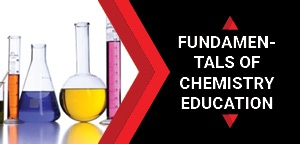
Track 1: Fundamentals of Chemistry Education
Chemistry Education or Chemical Education is a study of teaching and learning of chemistry in all institutions. Topics in chemistry education might include understanding how students learn chemistry, how best to teach chemistry, and how to improve learning outcomes by changing teaching methods and appropriate learning of chemistry instructors, within many modes, including classroom lecture, demonstrations, and laboratory activities. There is a constant need to update the skills of teachers engaged in teaching chemistry, and so chemistry education speaks to this need.
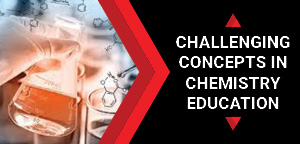
Track 2: Challenging Concepts in Chemistry Education
Chemistry Education in Today’s world is a challenge which can be tomorrows future. The challenging concepts in chemistry education are about learning advanced areas of chemistry like Gas laws, Thermodynamics, Kinetics, Equilibria, Redox Chemistry, Nuclear Chemistry, chemical reaction engineering etc. Understanding and learning core concepts of chemistry is very much essential nowadays. Chemistry is a content-driven, visually stimulating, and media-rich online science resource. Supporting Stem learning and the Next Generation Science Standards, it delivers curriculum-correlated content; promotes digital literacy and 21st-century learning skills; and offers research, report, and homework help. Core Concepts: Chemistry features a straightforward, easy-to-navigate interface. Interactive activities, timelines, and science experiments provide opportunities for hands-on learning and help students see science in context.
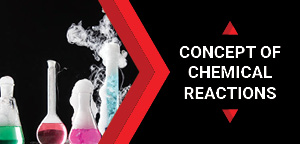
Track 3: Concept of Chemical Reactions
A chemical reaction is a process that leads to the transformation of one set of chemical substances to another. Classically, chemical reactions encompass changes that only involve the positions of electrons in the forming and breaking of chemical bonds between atoms, with no change to the nuclei (no change to the elements present), and can often be described by a chemical equation. Nuclear chemistry is a sub-discipline of chemistry that involves the chemical reactions of unstable and radioactive elements where both electronic and nuclear changes can occur. The substance initially involved in a chemical reaction are called reactants or reagents. Chemical reactions are usually characterized by a chemical change, and they yield one or more products, which usually have properties different from the reactants.
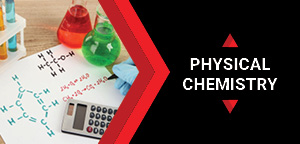
Track 4: Physical Chemistry
Physical Chemistry is the study of macroscopic, atomic, subatomic, and particulate phenomena in chemical systems in terms of the principles, practices, and concepts of physics such as motion, energy, force, time, thermodynamics, quantum chemistry, statistical mechanics, analytical dynamics and chemical equilibrium.
Physical chemistry, in contrast to chemical physics, is predominantly (but not always) a macroscopic or supra-molecular science, as most of the principles on which it was founded relate to the bulk rather than the molecular/atomic structure alone (for example, chemical equilibrium and colloids).

Track 5: Biochemistry
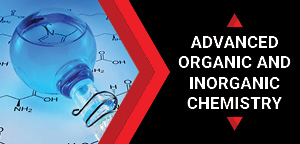
Track 6: Advanced Organic and Inorganic Chemistry
Organic chemistry is a chemistry subdiscipline involving the scientific study of the structure, properties, and reactions of organic compounds and organic materials, i.e., matter in its various forms that contain carbon atoms. Study of structure includes many physical and chemical methods to determine the chemical composition and the chemical constitution of organic compounds and materials. Study of properties includes both physical properties and chemical properties, and uses similar methods as well as methods to evaluate chemical reactivity, with the aim to understand the behavior of the organic matter in its pure form (when possible), but also in solutions, mixtures, and fabricated forms. The study of organic reactions includes probing their scope through use in preparation of target compounds (e.g., natural products, drugs, polymers, etc.) by chemical synthesis, as well as the focused study of the reactivities of individual organic molecules, both in the laboratory and via theoretical study. Inorganic chemistry deals with the synthesis and behavior of inorganic and organometallic compounds. This field covers all chemical compounds except the myriad organic compounds (carbon based compounds, usually containing C-H bonds), which are the subjects of organic chemistry. The distinction between the two disciplines is far from absolute, as there is much overlap in the subdiscipline of organometallic chemistry. It has applications in every aspect of the chemical industry, including catalysts, materials science, pigments, surfactants, coatings, medications, fuels and agriculture.
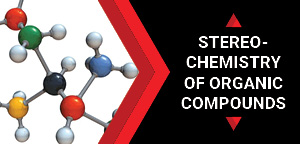
Track 7: Stereochemistry of Organic Compounds
Stereochemistry, a subdiscipline of chemistry, involves the study of the relative spatial arrangement of atoms that form the structure of molecules and their manipulation. An important branch of stereochemistry is the study of chiral molecules. The study of stereochemistry focuses on stereoisomers and spans the entire spectrum of organic, inorganic, biological, physical and especially supramolecular chemistry. The concept of isomerism is an important feature of the study of organic compounds. It relates to the existence of different compounds which have the same molecular formula but different properties. Such compounds are called isomers. The difference in properties of isomers is due to the difference in the relative arrangements of atoms in their molecules.
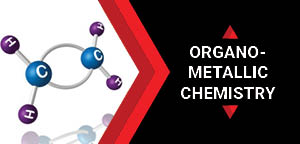
Track 8: Organometallic Chemistry
Organometallic chemistry is the study of chemical compounds containing at least one chemical bond between a carbon atom of an organic compound and a metal, including alkaline, alkaline earth, transition metal, and sometimes broadened to include metalloids like boron, silicon, and tin, as well. Organometallic compounds are widely used both stoichiometrically in research and industrial chemical reactions, as well as in the role of catalysts to increase the rates of such reactions where target molecules include polymers, pharmaceuticals, and many other types of practical products.
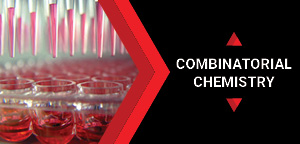
Track 9: Combinatorial Chemistry
Combinatorial Chemistry comprises chemical synthetic methods that make it possible to prepare a large number (tens to thousands or even millions) of compounds in a single process. These compound libraries can be made as mixtures, sets of individual compounds or chemical structures generated by computer software. Synthesis of molecules in a combinatorial fashion can quickly lead to large numbers of molecules. In its modern form, combinatorial chemistry has probably had its biggest impact in the pharmaceutical industry. Researchers attempting to optimize the activity profile of a compound create a 'library' of many different but related compounds. Advances in robotics have led to an industrial approach to combinatorial synthesis, enabling companies to routinely produce over 100,000 new and unique compounds per year..

Track 10: Chemicals and Material Science
The interdisciplinary field of materials science, also commonly termed materials science and engineering, involves the discovery and design of new materials, with an emphasis on solids. The intellectual origins of materials science stem from the Enlightenment, when researchers began to use analytical thinking from chemistry, physics, and engineering to understand ancient, phenomenological observations in metallurgy and mineralogy. Materials science still incorporates elements of physics, chemistry, and engineering. As such, the field was long considered by academic institutions as a sub-field of these related fields. Beginning in the 1940s, materials science began to be more widely recognized as a specific and distinct field of science and engineering, and major technical universities around the world created dedicated schools of the study. Materials science is a syncretic discipline hybridizing metallurgy, ceramics, solid-state physics, and chemistry. It is the first example of a new academic discipline emerging by fusion rather than fission. Thus, breakthroughs in materials science are likely to affect the future of technology significantly.
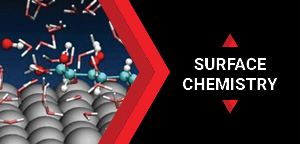
Track 11: Surface Chemistry
Surface science is the study of physical and chemical phenomena that occur at the interface of two phases, including solid-liquid interfaces, solid-gas interfaces, solid–vacuum interfaces, and liquid–gas interfaces. It includes the fields of surface chemistry and surface physics. Some related practical applications are classed as surface engineering. The science encompasses concepts such as heterogeneous catalysis, semiconductor device fabrication, fuel cells, self-assembled monolayers and adhesives. Surface science is closely related to interface and colloid science. Interfacial chemistry and physics are common subjects for both. The methods are different. In addition, interface and colloid science studies macroscopic phenomena that occur in heterogeneous systems due to peculiarities of interfaces.
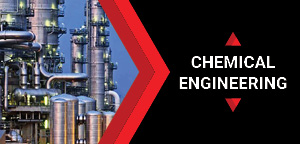
Track 12: Chemical Engineering
Chemical engineering is a branch of engineering that applies physical sciences (physics and chemistry), life sciences (microbiology and biochemistry), together with applied mathematics and economics to produce, transform, transport, and properly use chemicals, materials and energy. A chemical engineer designs large-scale processes that convert chemicals, raw materials, living cells, microorganisms and energy into useful forms and products. It is a process engineering which mainly comprises of the concepts of unit operation, unit process and chemical technology.

Track 13: Natural Product Chemistry
Chemistry of natural product is a field of organic chemistry. A natural product is a chemical compound or substance produced by a living organism that is found in nature. The term natural product has been extended for commercial purposes to refer to cosmetics, dietary supplements and foods produced from natural sources without added artificial ingredients. Natural products such as phytomedicines sometimes have therapeutic benefit as traditional medicines for treating diseases, yielding knowledge to derive active components as lead (active) components for drug discovery.

Track 14: Nuclear Chemistry
Nuclear chemistry is the subfield of chemistry dealing with radioactivity, nuclear processes, such as nuclear transmutation, and nuclear properties. It is the chemistry of radioactive elements such as the actinides, radium and radon together with the chemistry associated with equipment (such as nuclear reactors) which are designed to perform nuclear processes. This includes the corrosion of surfaces and the behavior under conditions of both normal and abnormal operation (such as during an accident). An important area is the behavior of objects and materials after being placed into a nuclear waste storage or disposal site. It includes the study of the chemical effects resulting from the absorption of radiation within living animals, plants, and other materials.

Track 15: Pharma Chemistry
Pharmaceutical chemistry is the study of drugs, and it involves drug development. This includes drug discovery, delivery, absorption, metabolism, and more. There are elements of biomedical analysis, pharmacology, pharmacokinetics, and pharmacodynamics. Pharmaceutical chemistry work is usually done in a lab setting. Pharmaceutical chemistry involves cures and remedies for disease, analytical techniques, pharmacology, metabolism, quality assurance, and drug chemistry. Many pharmaceutical chemistry students will later work in a lab. Pharmaceutical chemistry leads to careers in drug development, biotechnology, pharmaceutical companies, research facilities, and more. Studying pharmaceutical chemistry allows students to contribute to life-saving remedies, enhance the speed of delivery of new medications, and help others. Pharmaceutical chemistry also includes other branches of study such as pharmacokinetics, pharmacodynamics, and drug metabolism. These are important for learning the effects that drugs have on the body.

Track 16: Future Scope of Chemistry
A qualification in chemistry opens doors to a wide range of careers. Chemistry is involved in our everyday lives and there is a vast range of jobs and careers open to those who have studied chemistry at any level; great career opportunities exist both inside and outside the lab. Nobody knows what the jobs of the future will look like, but many of them will be created in chemistry to solve global challenges such as human health, energy and the environment. Chemistry can be a challenge as all believe Today’s Challenge can be Tomorrow’s Future.
Market Analysis
The chemicals market consists of speciality chemicals, commodity chemicals, agricultural chemicals, and other chemicals (which includes products such as pharmaceutical chemicals).
· Market values are taken at producer selling price (PSP).
· The global chemicals market is expected to generate total revenues of $4,378.7bn in 2016, representing a compound annual growth rate (CAGR) of 3.9% between 2012 and 2016.
· The performance of the market is forecast to follow a similar pattern with an anticipated CAGR of 3.8% for the five-year period 2016 - 2021
Global Chemicals industry profile provides top-line qualitative and quantitative summary information including: market size (value 2012-16, and forecast to 2021). The profile also contains descriptions of the leading players including key financial metrics and analysis of competitive pressures within the market.
Essential resource for top-line data and analysis covering the global chemicals market. Includes market size and segmentation data, textual and graphical analysis of market growth trends and leading companies.
- The chemicals market consists of speciality chemicals, commodity chemicals, agricultural chemicals, and other chemicals (which includes products such as pharmaceutical chemicals). Market values are taken at producer selling price (PSP). Any currency conversions used in the creation of this report have been calculated using constant 2015 annual average exchange rates.
- The global chemicals market is expected to generate total revenues of $4,378.7bn in 2016, representing a compound annual growth rate (CAGR) of 3.9% between 2012 and 2016.
- Commodity chemicals dominate the global market. The prevalence of commodity chemical production is common across the globe as they are typically low-cost and low-skill to produce, however increasing technology and chemical expertise fuelled by increasing investment has resulted in the sustained growth of specialty chemicals
- The performance of the market is forecast to follow a similar pattern with an anticipated CAGR of 3.8% for the five-year period 2016 - 2021
Scope:
- Save time carrying out entry-level research by identifying the size, growth, major segments, and leading players in the global chemicals market
- Use the Five Forces analysis to determine the competitive intensity and therefore attractiveness of the global chemicals market
- Leading company profiles reveal details of key chemicals market players' global operations and financial performance
- Add weight to presentations and pitches by understanding the future growth prospects of the global chemicals market with five year forecasts
LEARN MORE
Top Chemistry Universities Worldwide:
Europe Chemistry Universities:
University of Oxford | Imperial College | Universidad Autónoma de Madrid | EuroSciCon Conferences | University of Chemistry and Technology | University of Strasbourg | University of Evora | University of Erlangen-Nuremberg | Chalmers University of Technology | University of Bristol | University of Manchester | University College London | Ecole nationale superieure de chimie de Montpellier | Pierre-and-Marie-Curie University | Ecole europeenne de chimie | University of Debrecen | Ecole Superieure de Chimie Physique Electronique de Lyon | EuroSciCon | Chimie ParisTech | University of Paris-Sud | University of Munster | Uppsala University | Johannes Kepler University Linz | University of Pavia | University of Graz | University of the Basque Country | Rovira i Virgili University | Maria Curie Sklodowska University | Ruhr University Bochum | ESPCI ParisTech | Nicolaus Copernicus University in Torun | Montpellier 2 University | Adam Mickiewicz University in Poznan | University of Upper Alsace | Perm State University | Ecole nationale superieure des industries chimiques | Ecole nationale superieure de chimie et de physique de Bordeaux | University of Copenhagen Faculty of Science | Ecole normale superieure de Lyon
Massachusetts Institute of Technology | EuroSciCon Conferences | California Institute of Technology | Yale University | Princeton University | University of Chicago | University of North Carolina at Chapel Hill | Purdue University | University of California | Rice University | EuroSciCon | Emory University | Indiana University Bloomington | University of California | Scripps Research Institute | EuroSciCon | University of California | University of Oregon | Harvey Mudd College | Reed College | University of Connecticut
National University of Singapore | University of Tokyo | EuroSciCon Conferences | KAIST | Pohang University of Science and Technology | National Taiwan University | Fudan University | Peking University | EuroSciCon | University of Science and Technology of China | Osaka University | Indian Institute of Technology Delhi | Novosibirsk State University | Indian Institute of Science | Kyoto University | Indian Institute of Technology Kanpur | Lanzhou University
Africa Chemistry Universities:
University of Pretoria | University of capetown | University of south Africa | University of the Witwatersrand | Universiteit Stellenbosch | University of Johannesburg | North-West University | University of Nairobi | University of the Western Cape | University of Ibadan | The American University in Cairo | Cairo University | Rhodes University | Nelson Mandela Metropolitan University | EuroSciCon Conferences | Makerere University | Cape Peninsula University of Technology | Egerton University | University of Ghana | EuroSciCon | University of Lagos | University of Nigeria | Kenyatta University | Obafemi Awolowo University | Tshwane University of Technology | Durban University of Technology | Covenant University | Alexandria University | University of Khartoum | University of Fort Hare | Federal University of Technology | The German University in Cairo | University of Botswana | University of Abou Bekr Belkaid | University of Ilorin | Benha University | Jomo Kenyatta University of Agriculture and Technology | Assiut University | Sudan University of Science and Technology | Helwan University | University of Abuja | University of Zimbabwe | Vaal University of Technology
Alpha Chi Sigma | American Association for Clinical Chemistry | American Chemical Society | American Crystallographic Association | American Institute of Chemical Engineers | American Institute of Chemists | American Oil Chemists Society | American Society of Brewing Chemists | American Society for Mass Spectrometry | Association of Analytical Communities | Association of Greek Chemists | Belgian Society of Biochemistry and Molecular Biology | Biochemical Society | Canadian Society for Chemical Technology | Canadian Society of Clinical Chemists | Chemical Abstracts Service | Chemical Heritage Foundation | Chemical Institute of Canada | Chemical Society Located in Taipei | EuroSciCon | Chemical Society of Japan | Chemical Society of Nigeria | Chemical Society of Pakistan | Chemical Society of Peru | Chinese-American Chemical Society | Chinese Chemical Society | Chinese Chemical Society | Council for Chemical Research |
Euroscicon Ltd with immense pleasure invites all the contributors across the globe to the 2nd International conference on Food Security and Sustainability (Food Security 2017) during June 26-27, 2017 at San Diego, USA which includes prompt keynote presentations, Oral talks, Poster presentations and Exhibitions.
Euroscicon Ltd organizes 1000+ scientific events inclusive of 600+ Conferences, 500+ Workshops and 200+ Symposiums on various topics of Science & Technology across the globe with support from 1000 more scientific societies and Publishes 500+ Open Access journals which contains over 50000 eminent personalities, reputed scientists as editorial board members. Food security is often defined in terms of food availability, food access and food utilization. Global agriculture currently produces ample calories and nutrients to provide the entire world's people healthy and productive lives". However, food is not distributed equally to regions, countries, households and individuals. Improved access to food-through increased agricultural productivity and incomes-is essential to meet the food needs of the world's growing population. Successful food security and poverty-oriented programmes not only assist poor rural populations to produce more and diversified products but to produce a surplus that can be marketed and thereby generate income for the purposes of improving quality of life through improved diet and nutrition, investment in productive activity, and as collateral for credit to purchase inputs and/or other supplies to enhance agricultural or non-agricultural enterprise. Agricultural economists have maintained that greater concentration on small farmers leads to faster growth rates of both aggregate economic output and employment .Other analysts argue that production-focused service delivery directed solely at the poor as producers in isolated areas will yield low and probably diminishing returns. San Diego is a major city in California, on the coast of the Pacific Ocean in Southern California. San Diego is the eighth-largest city in the United States and second-largest in California With an estimated population of 1,394,928 as of July 1, 2015, San Diego is the birthplace of California and is known for its mild year-round climate, natural deep-water harbour, extensive beaches, long association with the United States Navy and recent emergence as a healthcare and biotechnology development center. The city is the seat of San Diego County and is the economic center of the region. Join us at Global Food Security conference for “Producing sustainable thoughts to bolster the future”. This event has been designed to address scientists, scholars, and different societies supporting food security, Industries and other related scientific communities with different levels of awareness, expertise and proactive solutions to create global impact in this field. Moreover, it will help industrialists to incorporate sustainability into every aspect of Agricultural Industries business model. The Food Security conference will influence industries to maximize their yield and profit through the application of strategic techniques. Additionally, it will reveal the best techniques to promote sustainable agricultural development and achieve a hunger free world by 2050.
We look forward to an exciting scientific event in the beautiful city of San Diego, USA.Market analysis


